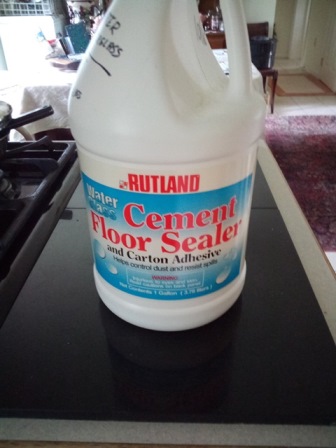
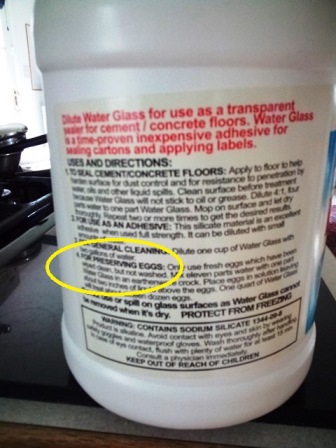
*Long Term Egg Preservation*
We keep a small handful of chickens for eggs. When the hens are laying we have too many eggs and like any good prepper we don't like to waste food. We've used the Water Glass (Sodium Silicate) solution in the past with great success; one year storage at room temperature (70F) with only one or two "floaters" (eggs that have gone bad). Some years back we built a walk-in cooler and began to wonder how long a storage time we could get at refrigerator temperatures still in the Water Glass Solution. Well, we still don't know but can say that we have gotten 3 years with only minor quality degradation and no eggs going bad! Here's the story showing what we did and how it worked out.
First to the method we used. The Water Glass we used is the Rutland brand and came from Lowe's in a gallon jug. It's sold as a cement floor sealer but also has preserving eggs as an approved use.


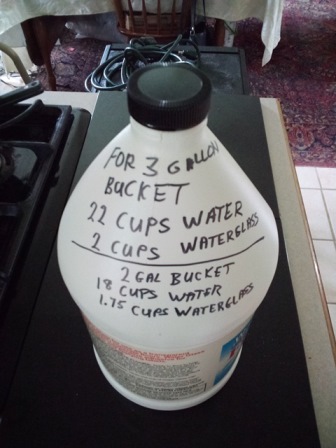
Dilution ratios of Water Glass and Water are shown on the jug but we needed much more egg storage capacity so I did the math and scaled up for two common bucket sizes.
We use a 2 gallon United Solutions brand plastic bucket sold at Lowe's with a gasketed lid, also from Lowe's. This holds 5~6 dozen Bantam eggs (smaller chicken breed) or around 4 dozen full size chicken eggs. This bucket is made from HDPE (recycling symbol 2). We haven't tried other plastics. You shouldn't use metal with Water Glass solution.
Mixing the solution is easy, measure the water into a clean bucket then add the measured amount of Water Glass and stir for 30 seconds with a plastic or stainless steel kitchen spoon, whisk or similar tool. We noticed that it was helpful to eliminate staining on the measuring cup and tool to wash them soon after mixing. You'll notice that the bucket is not full of solution; this is intentional because as you add eggs the liquid level in the bucket will rise. This amount of mixture allows a good number of eggs while leaving enough space at the top to get the lid on easily.
To use the solution we set the bucket on the counter with the lid just resting on the top and add eggs as the hens deliver them once a day. We only use fresh, nest clean eggs and do NOT wash or rinse them before adding to the bucket. Freshly laid eggs have a natural protective "bloom" on them and we want to keep that. Any eggs that are soiled or pooped on are washed and consumed for daily use; we don't want that mess in the storage bucket. We use long stainless steel kitchen tongs to gently place the eggs in the bottom of the bucket. We used to use a cut up plastic egg carton weighted to the bottom with stainless steel ball bearings to get the first layer of eggs started neatly with the small point down, but recently started using a 3D printed PLA plastic egg holder I designed. So far the PLA material hasn't dissolved in the solution! Anyway, you don't really have to put the eggs small point down, you can just put them in; we haven't noticed any storage differences with eggs laying in any orientation. We like to mark the lid with the Start Date, a running total as we add eggs and when we put the filled bucket into the cooler.
When the bucket is full, the lid gets carefully snapped down tight and carried into Coolbot, our walk-in cooler. Any refrigerator will do fine if you have the space in it. Here are 3 buckets of eggs on the floor in the cooler and a thermometer showing the temperature it's set at.
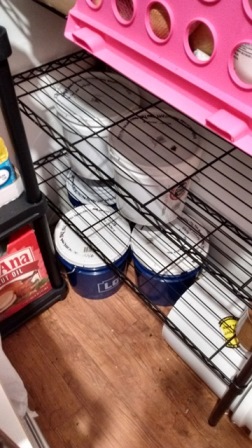
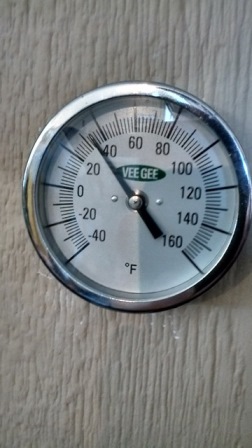
OK, let's see how this storage system worked out. Following are pictures of eggs that were put in Water Glass solution and then into the cooler in 9/27/2018. They came out of the cooler 9/20/2021 or just over 3 years. The pictures show the closed bucket, the open bucket and then frying an egg. Floating eggs are a sure sign that the egg is spoiled. In our earlier room temperature Water Glass solution test there were 2 floaters after 1 year but in this refrigerated test there were no floating eggs at all after 2 years.
When eggs are removed from the solution, they are rinsed well under cool water until the slippery feel of the solution is gone and then dried on a towel and used as normal. Eggs from the 3 year old bucket used in cooking and mixes showed no difference from fresh eggs. Fried in a skillet, the yolks were still perfect and the whites were somewhat thinner than fresh. We couldn't tell a taste difference and we didn't get sick eating any of the eggs.
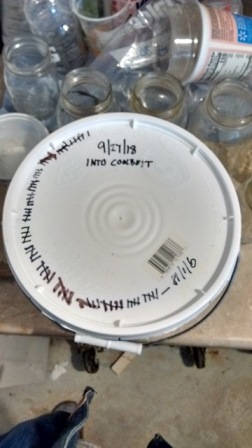
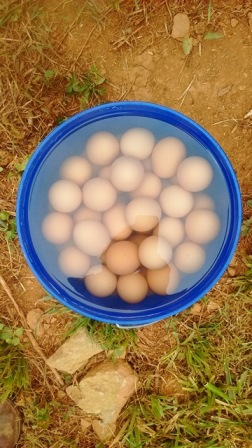
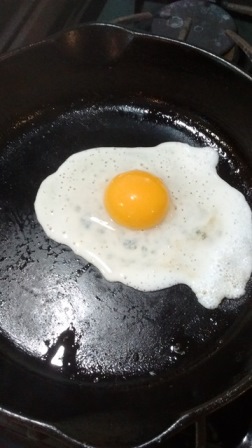
I hope this article gave you some food for thought and thanks for the read.
Spitfire
www.alpharubicon.com
All materials at this site not otherwise credited are Copyright © 1996 - 2021 Trip Williams. All rights reserved. May be reproduced for personal use only. Use of any material contained herein is subject to stated terms or written permission.